Eunsue Choi
Limitations of Data-Driven Spectral Reconstruction -- An Optics-Aware Analysis
Jan 08, 2024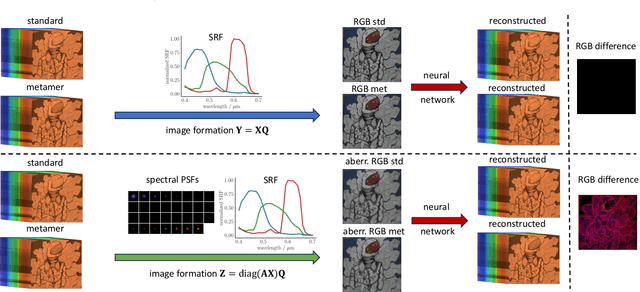

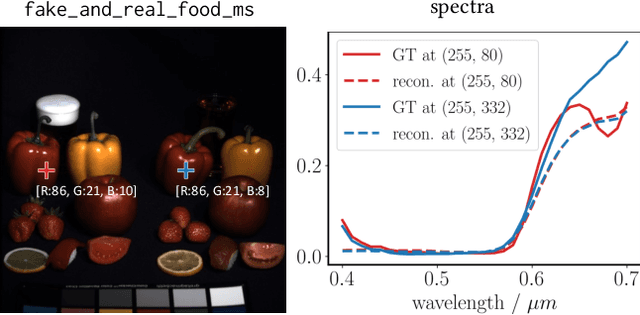
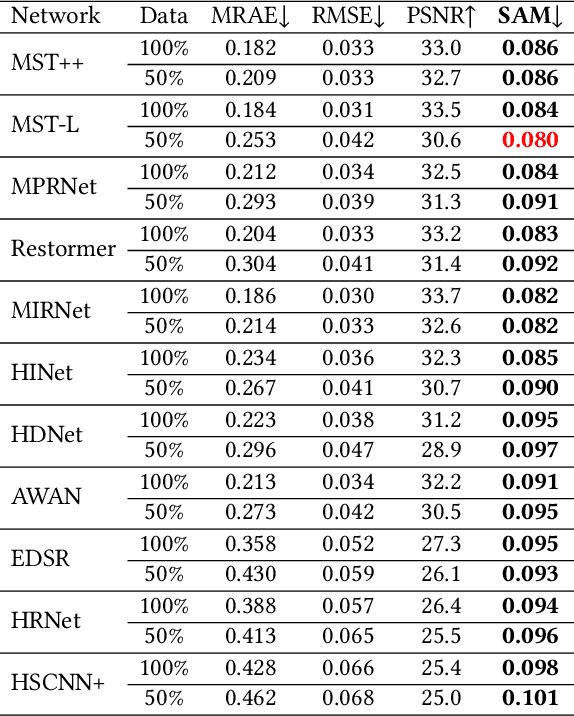
Abstract:Hyperspectral imaging empowers computer vision systems with the distinct capability of identifying materials through recording their spectral signatures. Recent efforts in data-driven spectral reconstruction aim at extracting spectral information from RGB images captured by cost-effective RGB cameras, instead of dedicated hardware. In this paper we systematically analyze the performance of such methods, evaluating both the practical limitations with respect to current datasets and overfitting, as well as fundamental limits with respect to the nature of the information encoded in the RGB images, and the dependency of this information on the optical system of the camera. We find that the current models are not robust under slight variations, e.g., in noise level or compression of the RGB file. Both the methods and the datasets are also limited in their ability to cope with metameric colors. This issue can in part be overcome with metameric data augmentation. Moreover, optical lens aberrations can help to improve the encoding of the metameric information into the RGB image, which paves the road towards higher performing spectral imaging and reconstruction approaches.
Spectral and Polarization Vision: Spectro-polarimetric Real-world Dataset
Nov 30, 2023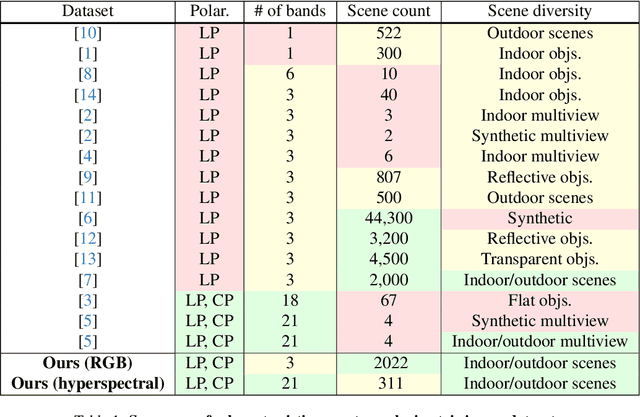
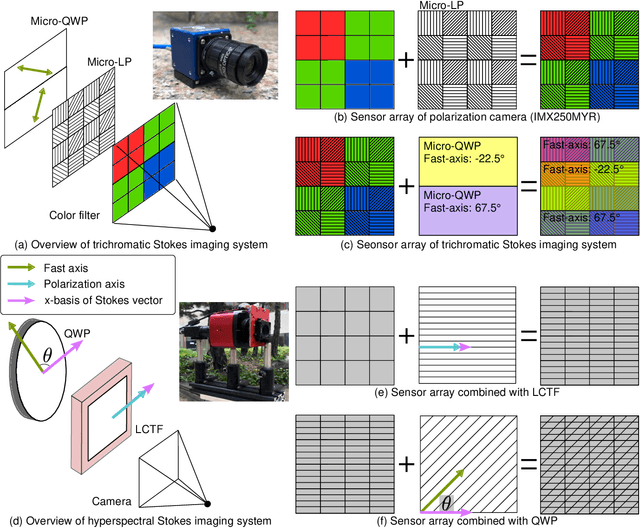
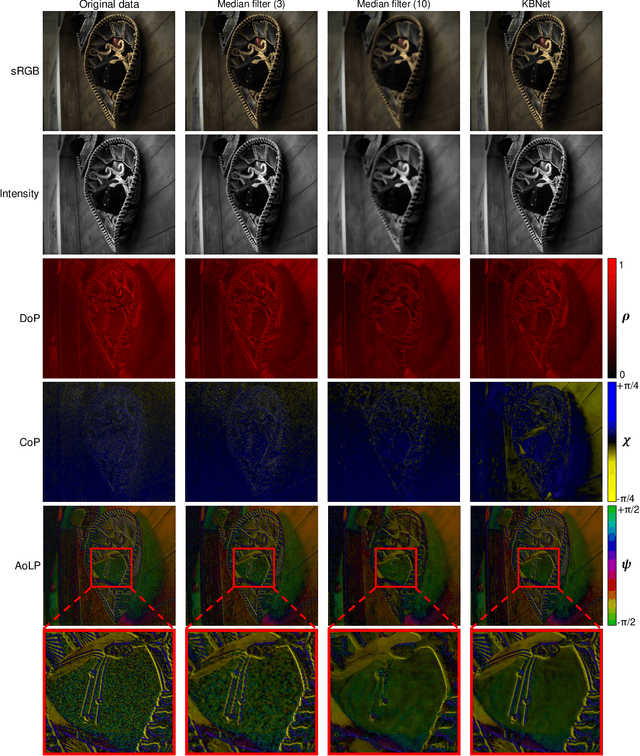

Abstract:Image datasets are essential not only in validating existing methods in computer vision but also in developing new methods. Most existing image datasets focus on trichromatic intensity images to mimic human vision. However, polarization and spectrum, the wave properties of light that animals in harsh environments and with limited brain capacity often rely on, remain underrepresented in existing datasets. Although spectro-polarimetric datasets exist, these datasets have insufficient object diversity, limited illumination conditions, linear-only polarization data, and inadequate image count. Here, we introduce two spectro-polarimetric datasets: trichromatic Stokes images and hyperspectral Stokes images. These novel datasets encompass both linear and circular polarization; they introduce multiple spectral channels; and they feature a broad selection of real-world scenes. With our dataset in hand, we analyze the spectro-polarimetric image statistics, develop efficient representations of such high-dimensional data, and evaluate spectral dependency of shape-from-polarization methods. As such, the proposed dataset promises a foundation for data-driven spectro-polarimetric imaging and vision research. Dataset and code will be publicly available.
Neural 360$^\circ$ Structured Light with Learned Metasurfaces
Jun 27, 2023Abstract:Structured light has proven instrumental in 3D imaging, LiDAR, and holographic light projection. Metasurfaces, comprised of sub-wavelength-sized nanostructures, facilitate 180$^\circ$ field-of-view (FoV) structured light, circumventing the restricted FoV inherent in traditional optics like diffractive optical elements. However, extant metasurface-facilitated structured light exhibits sub-optimal performance in downstream tasks, due to heuristic pattern designs such as periodic dots that do not consider the objectives of the end application. In this paper, we present neural 360$^\circ$ structured light, driven by learned metasurfaces. We propose a differentiable framework, that encompasses a computationally-efficient 180$^\circ$ wave propagation model and a task-specific reconstructor, and exploits both transmission and reflection channels of the metasurface. Leveraging a first-order optimizer within our differentiable framework, we optimize the metasurface design, thereby realizing neural 360$^\circ$ structured light. We have utilized neural 360$^\circ$ structured light for holographic light projection and 3D imaging. Specifically, we demonstrate the first 360$^\circ$ light projection of complex patterns, enabled by our propagation model that can be computationally evaluated 50,000$\times$ faster than the Rayleigh-Sommerfeld propagation. For 3D imaging, we improve depth-estimation accuracy by 5.09$\times$ in RMSE compared to the heuristically-designed structured light. Neural 360$^\circ$ structured light promises robust 360$^\circ$ imaging and display for robotics, extended-reality systems, and human-computer interactions.
 Add to Chrome
Add to Chrome Add to Firefox
Add to Firefox Add to Edge
Add to Edge